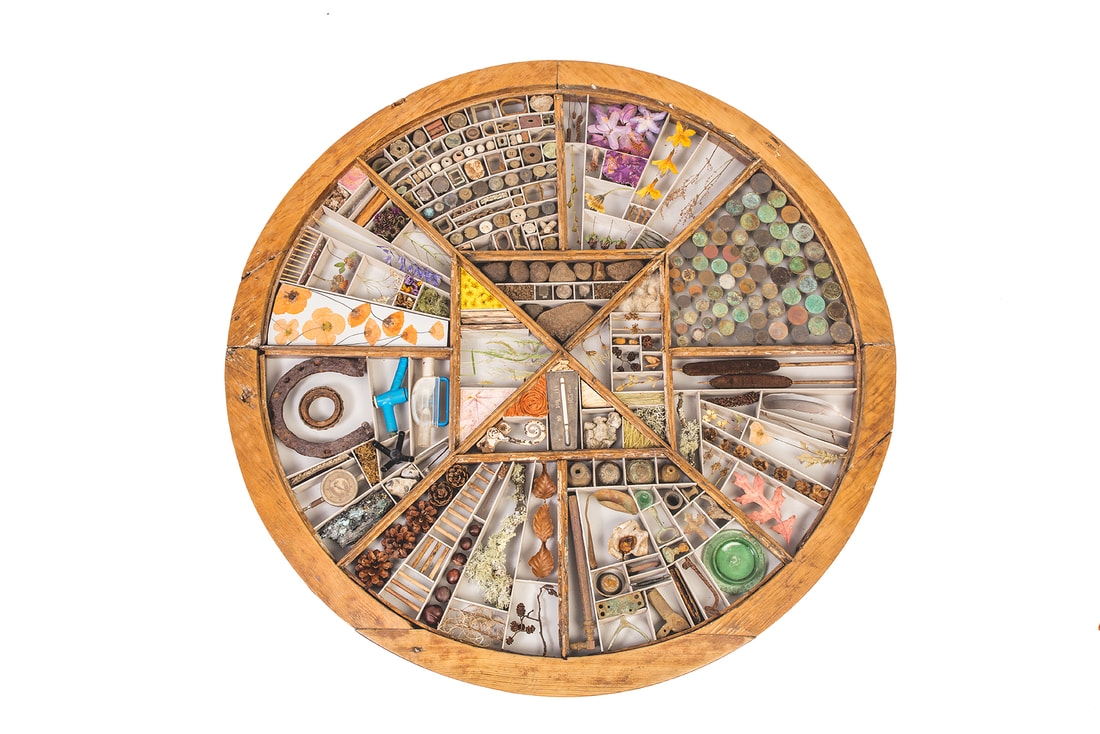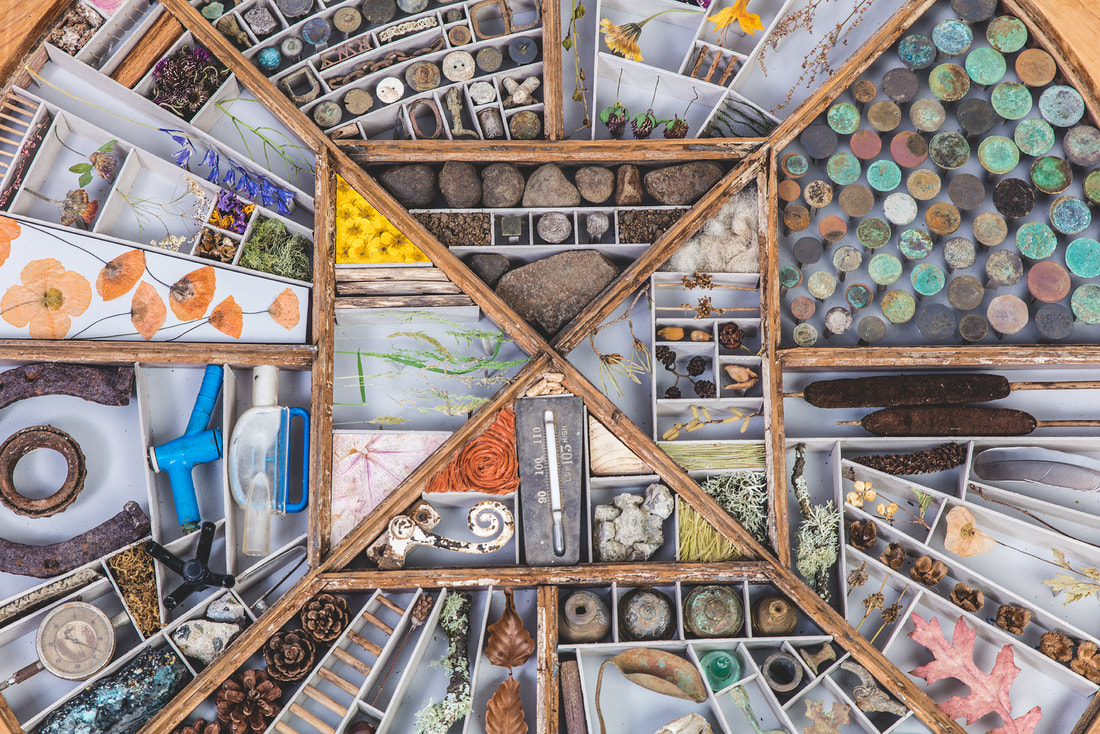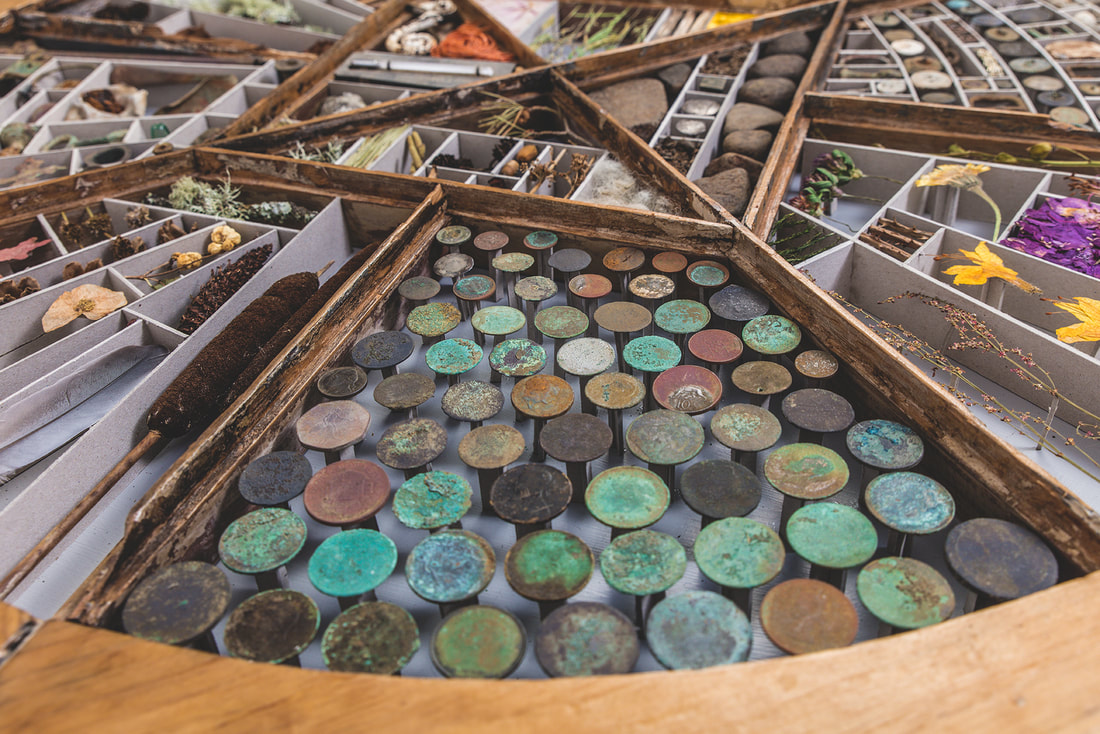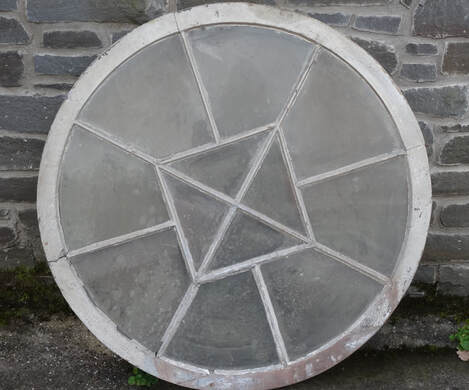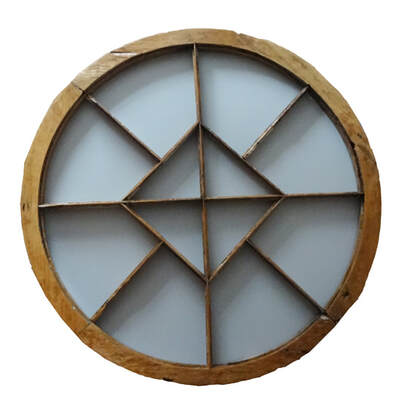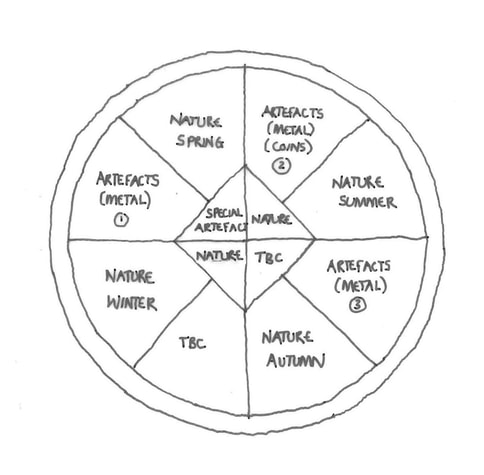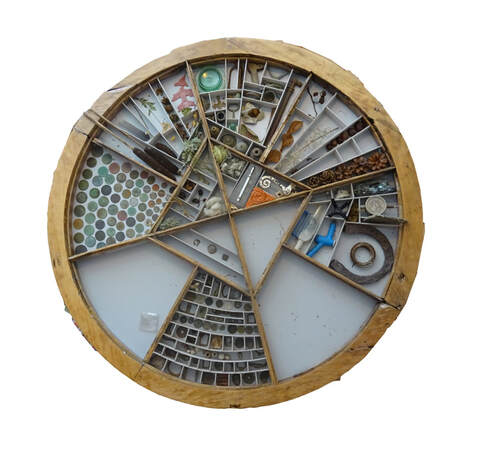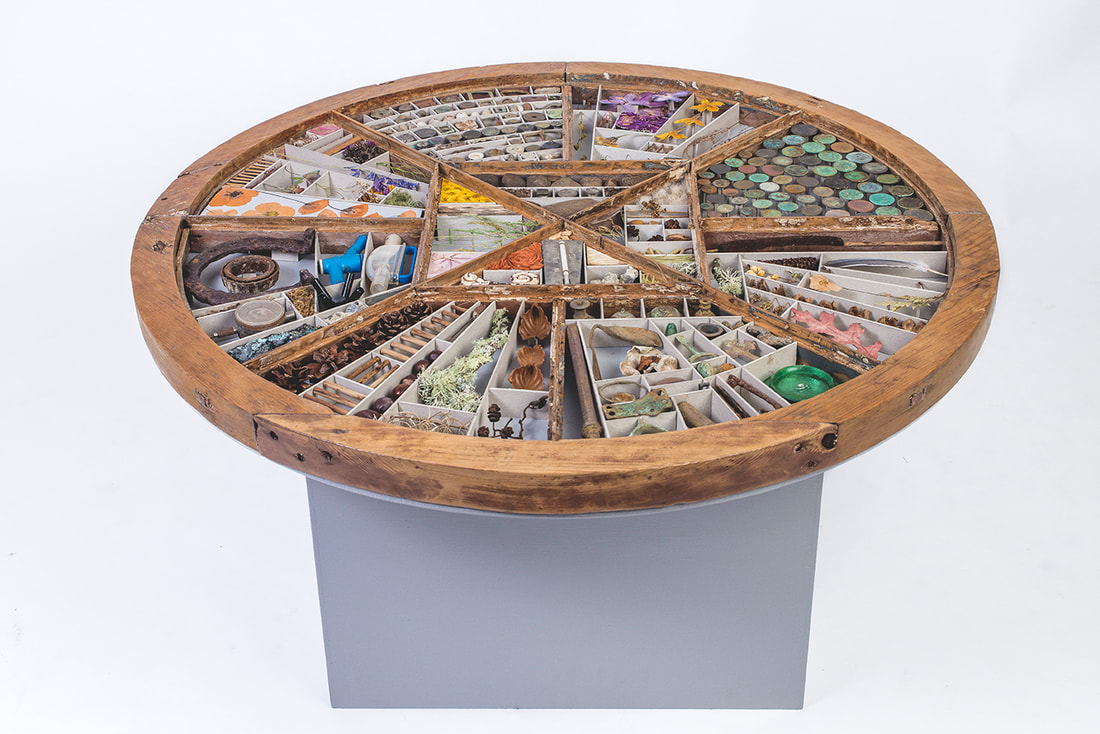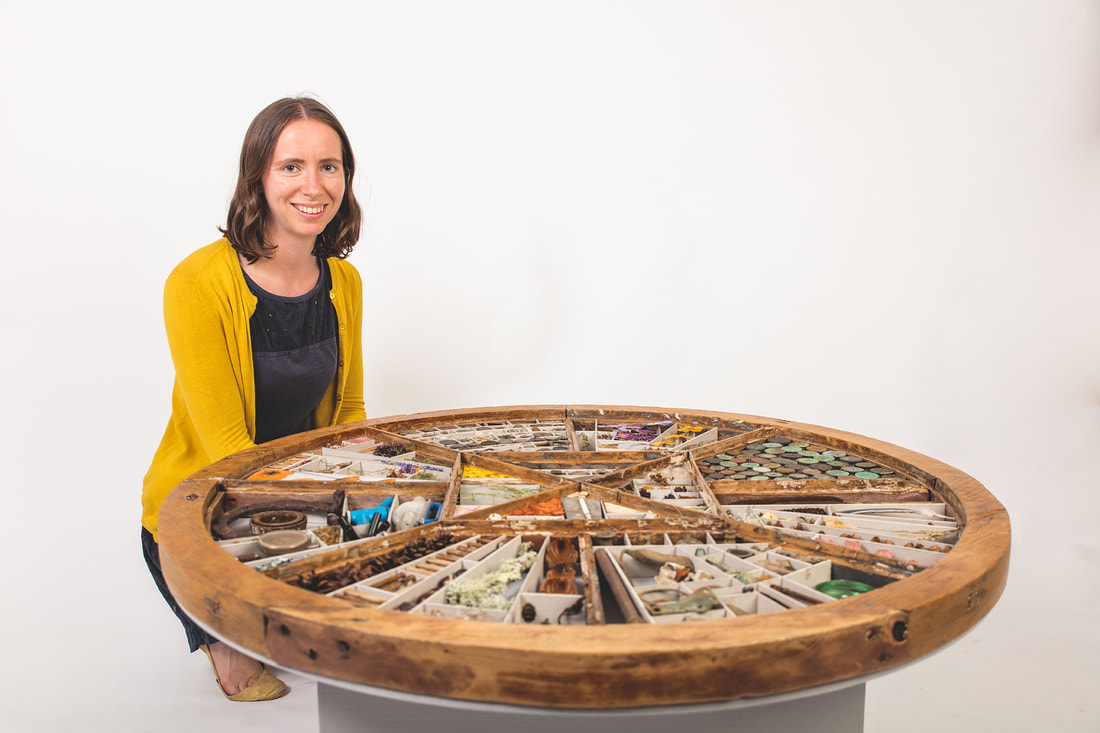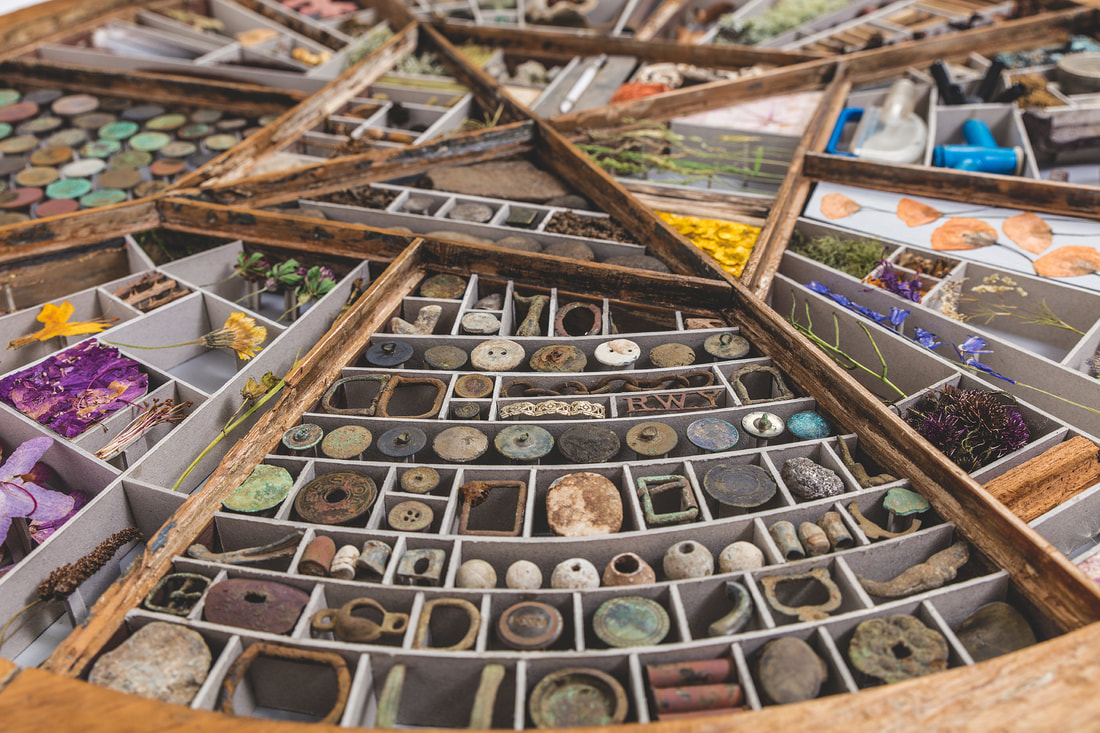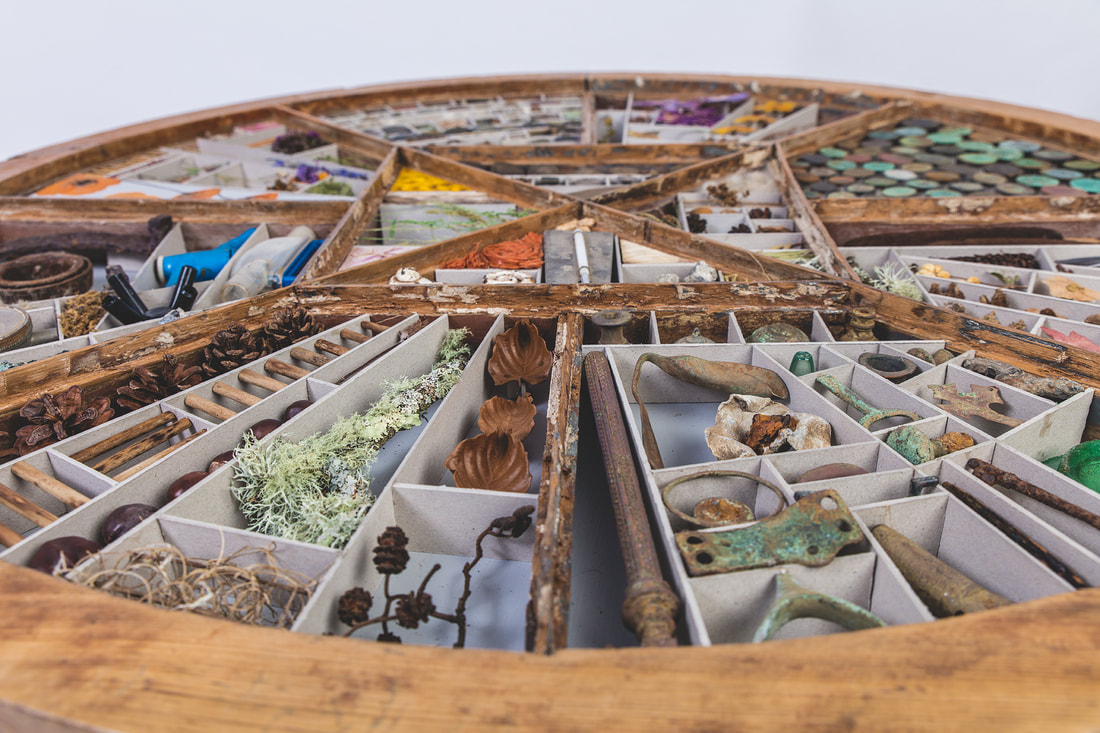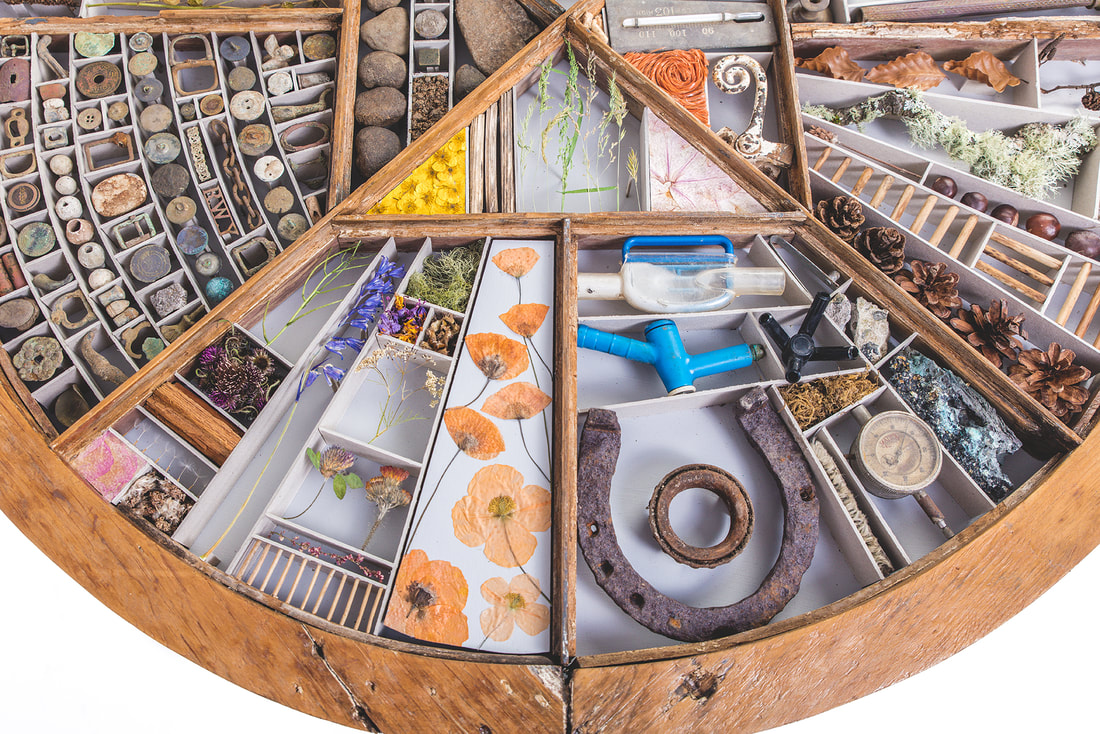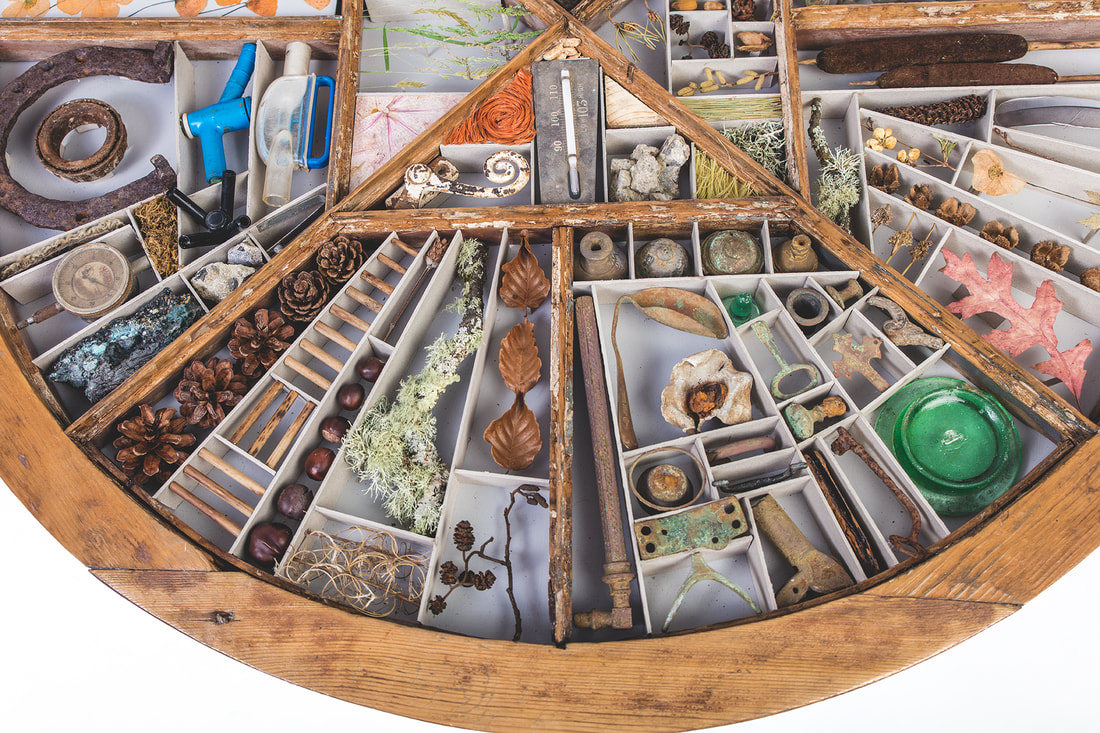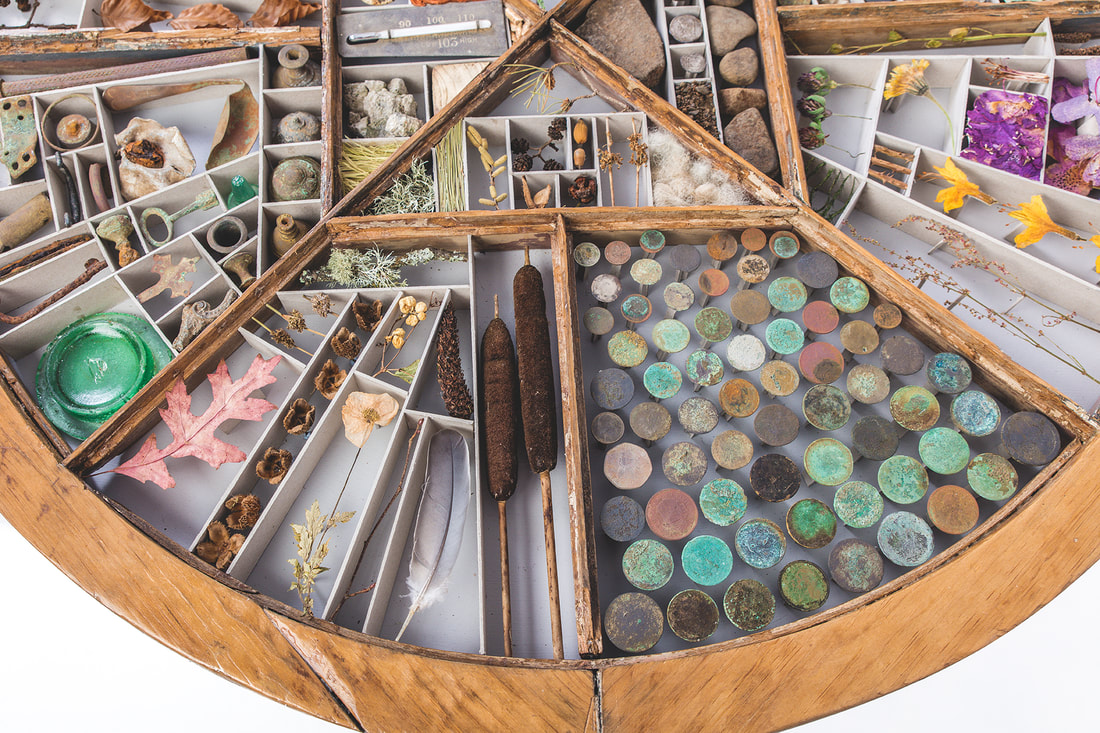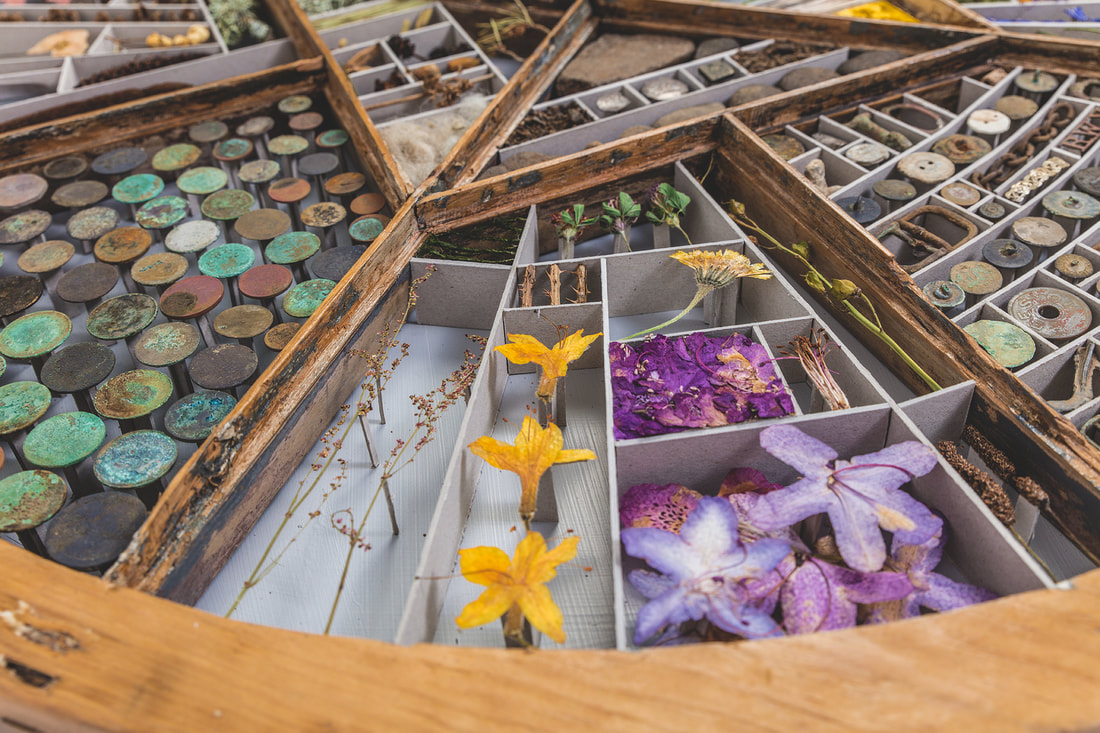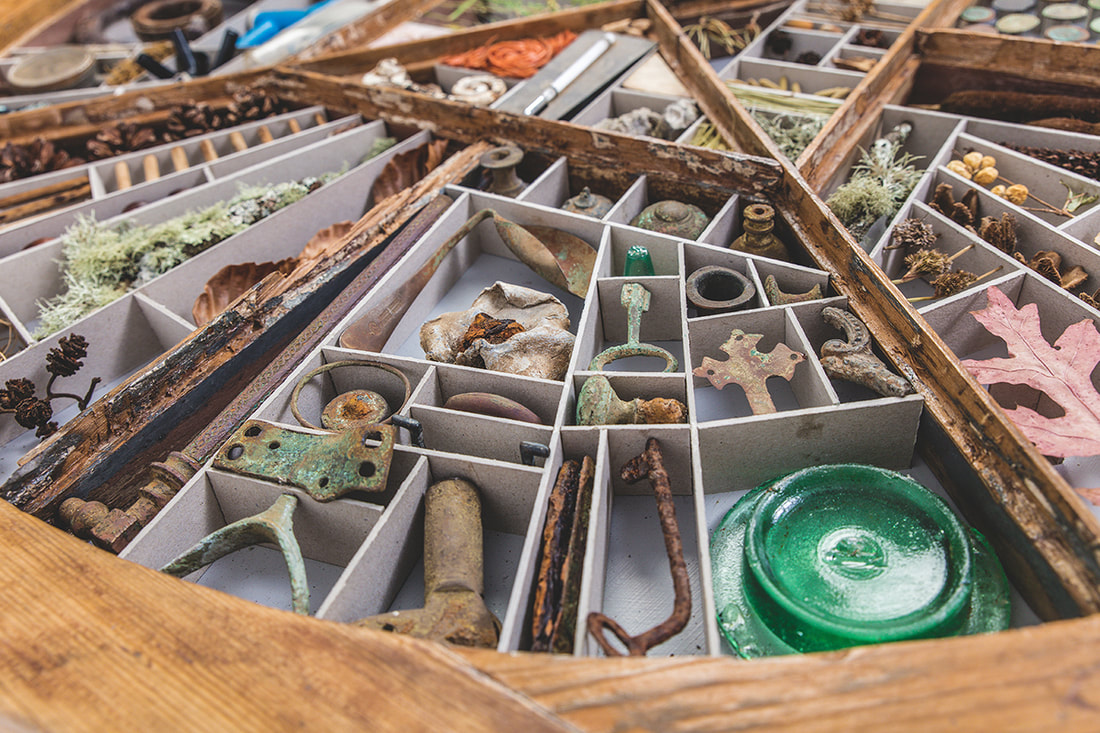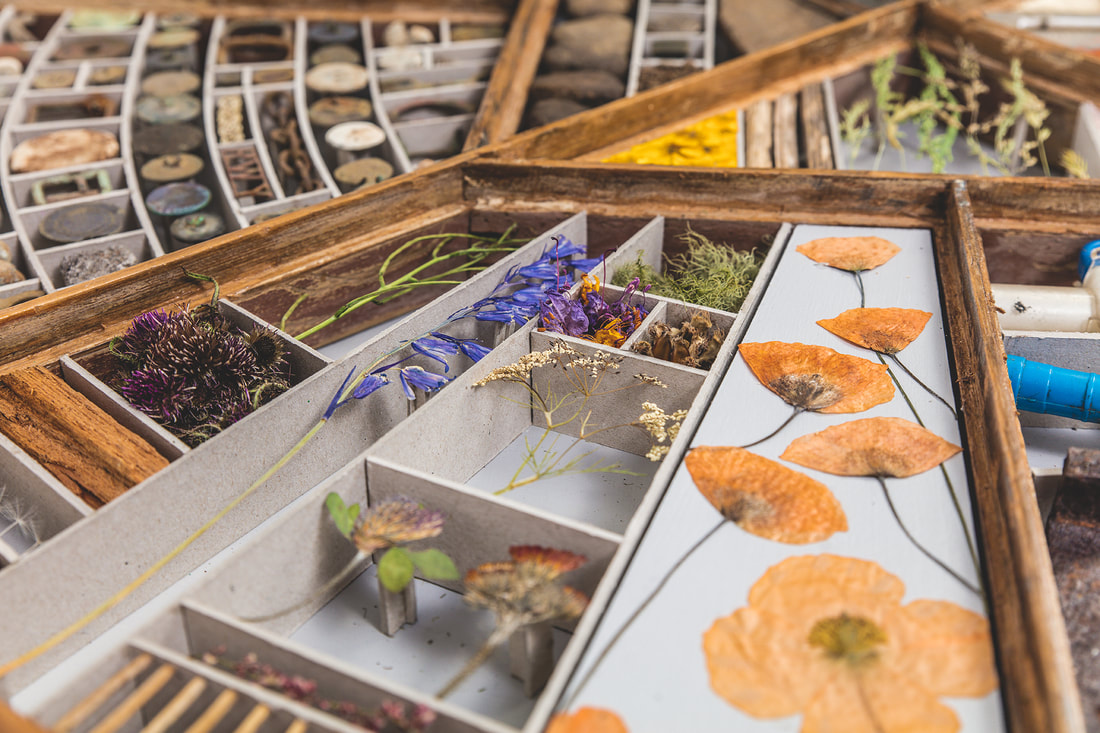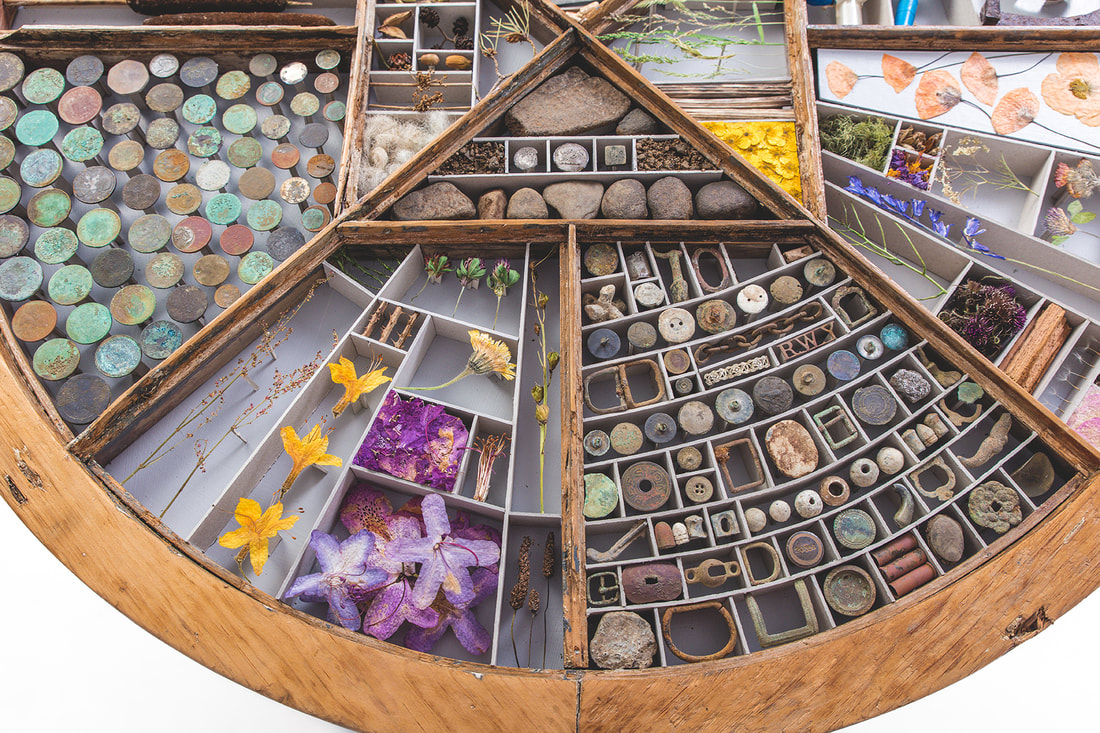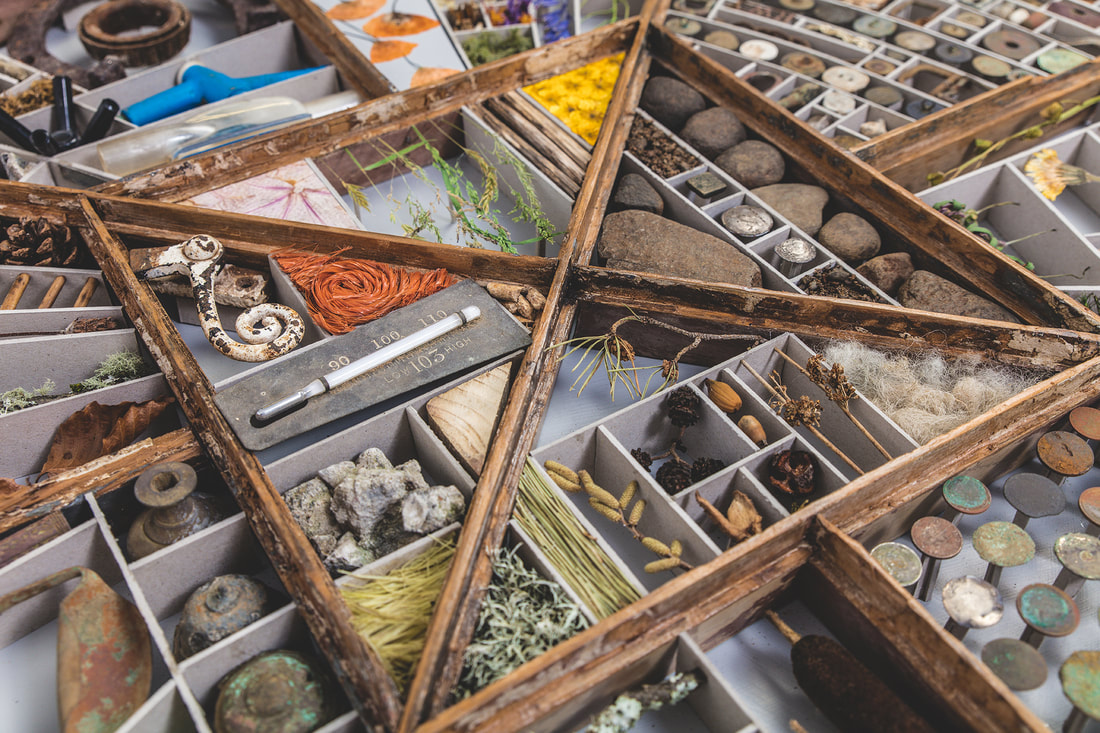COFFEE TABLE COMMISSION FOR WALES HOLIDAY COTTAGES
|
" Katherine was a delight to work with at every stage of the project. She took our very vague idea and showed great ingenuity, creativity and patience to produce a truly unique and wonderful piece of art".
Richard |
|
This coffee table was a large and very interesting commission. Around 1m in diameter, it displayed objects that had been found and collected on the site of Plas Farm holiday cottages.
The unique history of the farm buildings is echoed in the piece, including a button that dates back to the 17th Century and an old, rare coin. Every other section of the round window displays the changing natural world of Plas Farm through the seasons. |
|
A memory box full of history
I met my client Richard at a Christmas market in the Chapter Arts Centre in Cardiff. He told me he owned a number of holiday cottages on a farm near Pontardawe. I heard about the farm’s very interesting history and Richard explained that he’d written a book about the building and the land. Some time before the Christmas market, a series of metal detector specialists had come out to the farm to see if they could find anything. They dug up some remarkable artefacts which the client wanted to display alongside a range of natural items. Richard asked me if I could create a coffee table that would be used in one of their cottages, with an old button as the centrepiece. The centrepiece button features an illustration of a raven. Several of these buttons have been found around the farm. It’s believed they once belonged to a member or servant of the Lloyd family who owned the Plas Cilybebyll Estate between 1725 and 1957. The family’s coat of arms included three ravens, the legendary symbols of Urien Rheged, an Arthurian knight from whom the family descended. These buttons are just a small part of the memory box coffee table. The farm has a truly remarkable history. It’s linked to the descendants of Welsh Kings, Arthurian legend, tales of the Mabinogion, the Norman invasion, the Earls of Pembrokeshire, eighteenth century French prisons, Charles II, Iolo Morgannwg, the tea plantations of Ceylon, coal mining, the Industrial Revolution, Winston Churchill’s secret army and much more. Wow! |
|
The process
After a series of initial emails and discussions, I went to visit the farm. While I was there, Richard showed me a number of artefacts, plus an old circular window frame from the renovated Georgian Coachhouse. We discussed the possibility of using this frame as the base of a memory box coffee table. Richard loved these ideas and gave me freedom to bring everything together. There were just a few requests from him and his family: - He wanted to keep the window frame as close to its original form as possible. - He wanted to ensure the glass top was completely safe, so there was no danger of breakages (or spillages running into the display). I agreed to these requirements and asked if we could take the frame back to the natural wood so we could showcase its history. Richard arranged for the window to be stripped of paint and set about cleaning the metal artefacts before dropping everything over to my house. Making the coffee table memory box When I made the memory box, I was very careful to preserve the window frame. I ensured none of the frame’s 'spokes' were altered. When it came to the dividers and background, I decided to use a light grey to distinguish the difference between old and new. As light grey is a neutral colour, I also felt it would give the objects the impact they deserved. I liaised with a joinery company to make the base of the table and a glass specialist to ensure the glass top was safe and secure. |
|
The frame has eight larger segments and four smaller segments. I put together a sketch to outline how the different elements could be organised.
The objects from the metal detector were fairly small, so those elements were designed to take up three segments of the window. While the farm artefacts left over from the renovations filled another two segments. These elements all helped to tell the story and the history of the farm. The remaining segments featured more detailed nature elements, plus pieces collected from the land. I used a segment to represent each season. Once I’d worked out the structure, I started crafting and putting all the pieces together. I kept the client updated as the box was progressing. It was a real team effort, as sometimes I needed more objects collected (particularly the natural elements as they were seasonal). |
|
This was a wonderfully unique project, which I really enjoyed creating. I also loved that the final piece was a beautiful, yet functional, piece of art.
|
